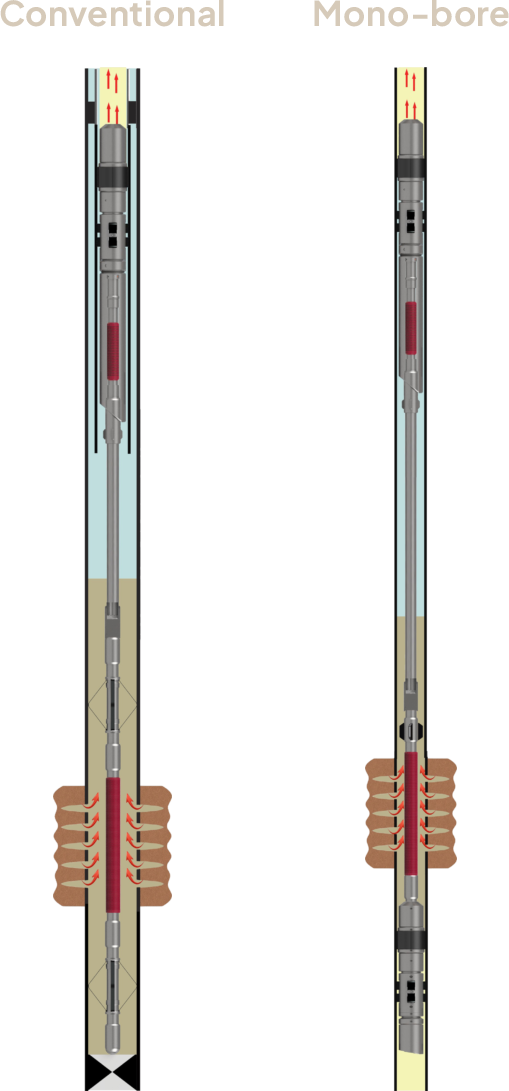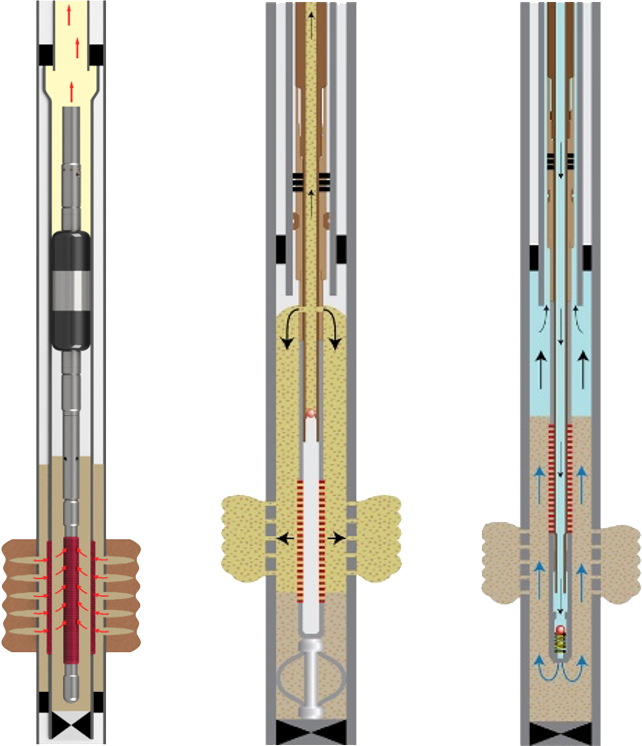
Unwanted sand/solids production is a common issue negatively affecting profitability in many oil and gas basins across the globe. In many cases the wells are required to be choked or beaned back to solids free lower production rates which significantly reduces the volumes of hydrocarbons produced thus lowering revenue per well.
The most robust means for remediating formation solids/sand production in oil and gas wells over the past +75 years has been to install a gravel pack system across the completion interval in the well. This system filters out the formation solids/sand from the produced fluids. Historically the gravel pack system required installation during the rig completion of the well or during a rig workover type well intervention.
In order to install a conventional gravel pack system into a well that is already producing would require removal of the original completion equipment by a workover rig, installing the gravel pack system, then re-installing the upper completion, all of which is very expensive.
TTS, however, has developed several systems that offer the same level of performance as the above, however, without the need of a rig intervention or workover normally required for the gravel pack installation.
TTS’s gravel pack systems are designed to be installed into the well during a non-rig well intervention where the gravel pack system is run through the existing completion equipment currently landed in the well. Specifically, the installation is accomplished during coil tubing or even a more cost effective, wireline well intervention. The cost and footprint of these interventions equate to a cost savings of an order of magnitude in many cases. As a result, the well can be produced sand free for the life of the well while restoring higher production rates and profitability.

Vent Screen Gravel Pack with Packer Isolation: Used when the top of the vent screen assembly is tied back to the production tubing. *Available for install using wireline only well intervention. No work string required.
*Conventional and Mono-bore pictured

Vent Screen Gravel Pack with Cement Cap Isolation: Used when the top of the vent screen assembly is located in casing below the production tubing. *Available for install using wireline only well intervention. No work string required.
*Conventional pictured
Legacy One Trip Coil Tubing Circulating or Squeeze Pack Systems: Over the years TTS has developed and utilized numerous systems to meet our clients’ needs to accomplish rigless sand control. While all of these systems satisfied the needs to provide sand free production, evolving technologies and experience showed us that there were ways to improve on these. The ever-changing economic picture also played a large part in our research and development of this product line. Expansion outside of the Gulf of Mexico and the fact that all types of services are not readily available everywhere also pushed us to develop rig-less sand control systems to fit other markets.
The rigless sand control systems exhibited in this section are still available through TTS but are not commonly kept in stock. The systems we provide today have evolved from these and provide the same quality gravel pack, but in an operationally and economically more efficient manner.
One-trip installation using coil tubing.


Stand-Alone Screen Systems: TTS stand-alone screen systems are engineered for success. Stand-alone screen systems are quite often misunderstood, overly simplified and mis-applied resulting in many unsuccessful installations. TTS has the experience of installing standalone screens in several hundreds of wells over the past +23 years. At TTS we pride ourselves in conveying our significant experiences to our client base in order to guarantee application success.
*Stand-alone screen installed using tubing packer pictured.
Sand Control Systems utilize a combination of the following TTS products:
Quite often during non-rig well intervention operations it is necessary or desired to install long sections of tubulars into the well, such as sand screens and similar tubular assemblies. This necessity creates many challenges for operators and service companies with regards to maintaining well control during these installations.
As most non-rig well interventions involve the use of coil tubing or wireline operations intervening through the existing production tubing on live wells, a means by which to install these long assemblies into the well while maintaining multiple barriers of well control becomes a necessity.